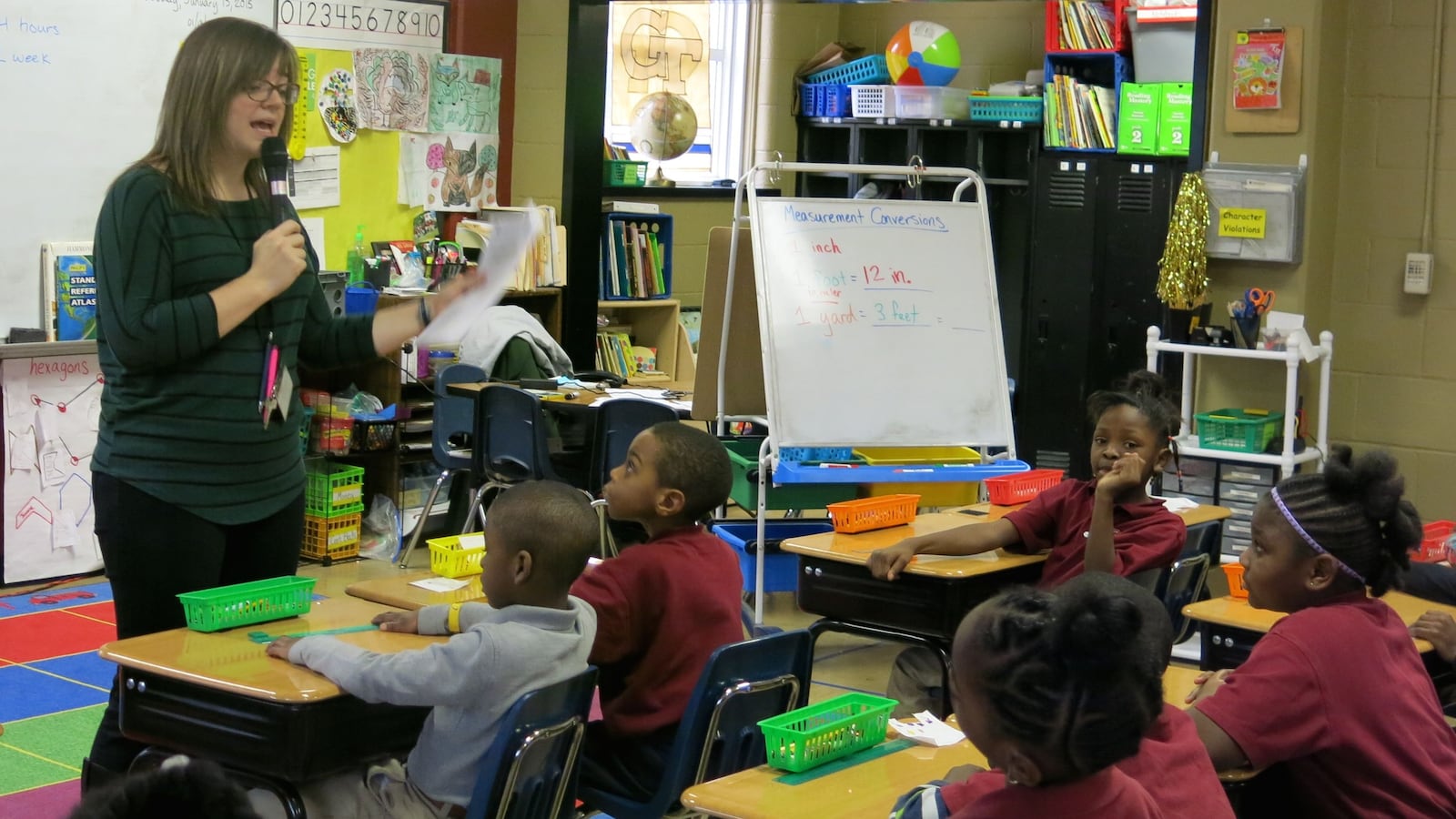Two important school finance bills moved smoothly out of the House Education Committee on Wednesday, with some touchy major issues left for the Senate.
After saying how pleased she was with how work on the bills had gone, prime sponsor Rep. Millie Hamner said, “I will also acknowledge we have more work to do. … We have agreed to let the Senate take on the challenges that remain.”
Those issues include reform of enrollment counting and use of school construction funds, among others.
House Bills 14-1292 and 14-1298 still face two House floor votes before they move to the other chamber, but no major changes are expected on the floor.
Known as the Student Success Act, HB 14-1292 would reduce the current $1 billion school funding shortfall by $100 million and also proposes spending a total of more than $200 million on implementation of reform laws, English language learner programs, early literacy, kindergarten facilities and charter construction and implementation of new enrollment-counting and financial transparency systems.
The accompanying School Finance Act, House Bill 14-1298, is partly a technical bill needed to provide annual school spending, but it also would provide an additional $17 million that districts could use for either preschool or full-day kindergarten slots for at-risk children. The money would support slots for 5,000 additional students.
The committee approved both major and minor amendments proposed by its sponsors after extensive negotiations with school districts and other interest groups about HB 14-1292.
But the most important amendment, which would have stripped a controversial new enrollment counting system from the bill, wasn’t offered because of lack of agreement on the issue.
The original version of the bill proposed a phased switch to the average daily membership system of counting enrollment, replacing the state’s current Oct. 1 single count. That’s a change sought by Republicans and education reform groups, but districts have pushed back on the idea because of concerns about cost and administrative burdens.
Hamner prepared an amendment that would have replaced the ADM section of the bill with a two-count system, Oct. 1 and Feb. 1. She indicated she hadn’t reached agreement on the issue with Rep. Kevin Priola of Brighton, the primary Republican proponent of ADM.
“This conversation will continue in the Senate,” said Hamner, a Dillon Democrat who’s also chair of the committee. With a nod to people “who aren’t quite as pleased or satisfied” with the bill as she is, Hamner added, “Clearly there’s more work to be done on the ADM language” and on parts of the bill that propose spending on kindergarten and charter school facilities. Critics of those provisions fear they would divert money from the Building Excellent Schools Today construction grant program.
Another amendment, which would change the bill’s proposed spending on English language learner programs, was proposed and adopted. The amendment reduces the proposed funding from $35 million to $30.5 million, would provide the money through an existing distribution mechanism rather than a separate one originally proposed and would reduce the levels of data reporting requirements and Department of Education oversight originally suggested.
The amendment “takes out some of the requirements that the school districts found onerous and complicated,” Hamner said.
Two other amendments expand the potential uses of funds district would receive from a $40 million “implementation fund” intended to help them pay the costs of implementing new content standards, tests and education evaluation systems.
The committee made no changes in HB 14-1292’s proposal to reduce the K-12 spending shortfall (known as the negative factor) by $100 million. Districts have pushing for reductions as high as $275 million.
Hamner obliquely referred to that dispute by noting that new state revenue forecasts weren’t “quite as optimistic as we’ve hoped for,” hinting that a larger reduction would be difficult.
(In a related development, the Joint Budget Committee on Wednesday voted 5-1 for an amendment to the yet-to-be-introduced state budget bill that would devote an additional $52 million to K-12 funding next year. The money would be raised by shaving planned increases in payments to medical providers and in state employee salary increases. Sen. Pat Steadman, D-Denver, said the transfer would make a $100 million reduction in the negative factor more financially sustainable. He declined to say whether he’d support or oppose a negative factor reduction of more than $100 million.)
House Education passed HB 14-1292 on an 11-1 vote. Only Rep. Chris Holbert, R-Parker, voted no, noting his district (Douglas County) opposes the bill and saying, “This is not the answer.”
The panel’s vote on HB 14-1298 was split, and it passed on a 7-5 party-line vote. Committee Republicans opposed the additional spending on at-risk preschool and full-day kindergarten students, saying it would only benefit some districts.
Rep. Jim Wilson, R-Salida, proposed an amendment to remove the bill’s earmark for early education and let districts spend the extra $17 million as they choose. Wilson said his preference is that districts use it for full-day kindergarten, which currently is only partly funded by the state. Committee Democrats killed the amendment.
HB 14-1298 also contains a provision that would divert 75 percent of any state surplus left at the end of 2014-15 into the State Education Fund, a dedicated account restricted to K-12 spending. What happens to that plan is anybody’s guess. Steadman told Chalkbeat Colorado he opposes that idea, and Steadman is expected to be a central figure in school finance decisions in the Senate.
A final financial note
The budget committee, working to finalize the main budget bill before it’s introduced next week, also took a significant action relative to new spending.
The panel voted 6-0 to set aside $50 million for spending on new state programs proposed by bills pending in the House and Senate appropriations committees. Several bills want new spending on various education programs. (See this story for details on those bills.)
The $50 million is considerably higher than the amounts of money available for new programs in recent legislative sessions.


